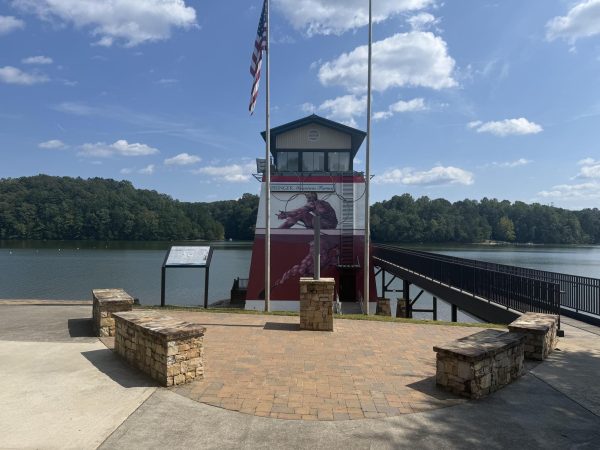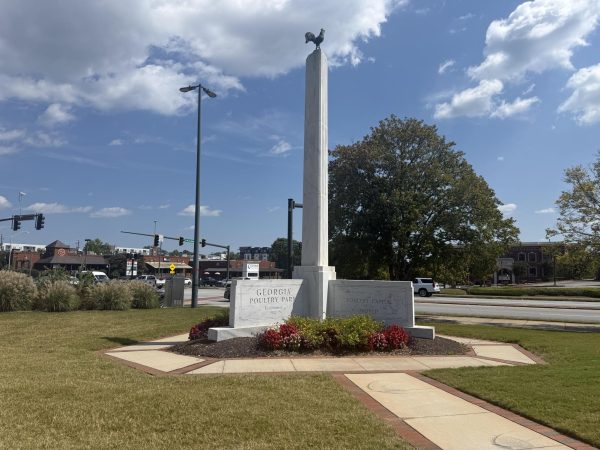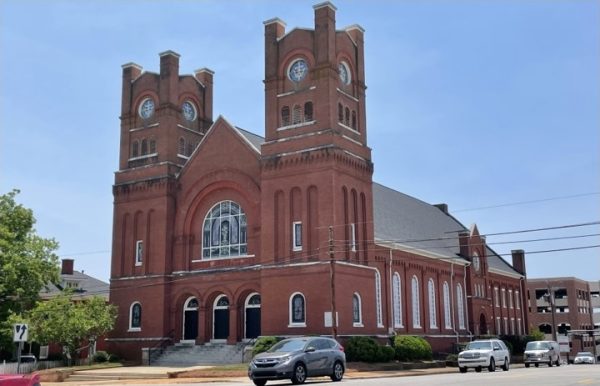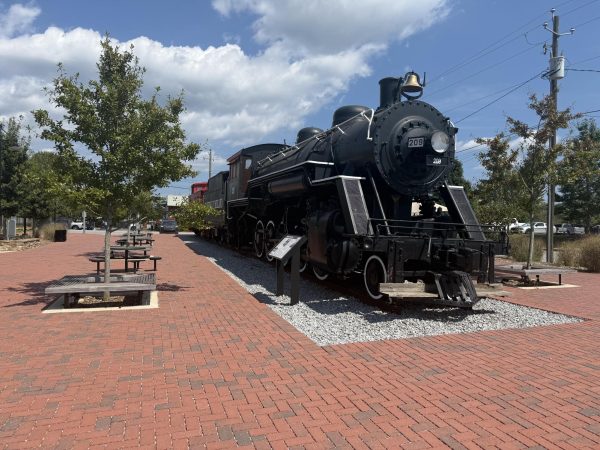The City of Gainesville was established on November 30, 1821. With deep roots comes a deep history, and Gainesville has plenty of it to show. Here are some of the City’s historical sites.
The Smithgall Arts Center

The Smithgall Arts Center has not always just been an arts center. Beginning in 1914, the building acted as a passenger depot for the Jefferson, Southern and Gainesville Midland Railroad.
As passenger service declined in the 1940s, the facility converted into a freight depot. In 1992, it was purchased by The Arts Council.
“We want to use these historic buildings to provide and engage people in the arts. We focus on retaining the historic properties to hold the emotion of our past to make sure the stories come along with them. We want to marry the past, present and future.” – Pamela Williams-Lime, The Arts Council Director
A plethora of renovations went into making it the Smithgall Arts Center, which was ultimately finished in 1996. The name “Smithgall” honors Lessie Smithgall, who was a key founder and benefactor of The Arts Council.
The center continues to be an important place in the City of Gainesville, holding numerous events, such as the Evenings of Intimate Jazz series and Summer Music Fest.
Address – 331 Spring Street SW, Gainesville, GA 30501
Lake Lanier Olympic Park

Lake Lanier Olympic Park was built for the 1996 Summer Olympic Games, which focused on rowing, canoe and kayak events. Since the Olympics, it has been used for a variety of reasons.
Community efforts helped establish The Lake Lanier Rowing, Canoe and Kayak Club to continue the legacy of hosting world-class water sports, which brings in some of the best athletes year-round.
The city has added a lot to the park, including a lakeside venue, called The Boathouse, which has been used for weddings, conferences and other events.
Address – 3105 Clarks Bridge Rd, Gainesville, GA 30506
The Poultry Capital of the World Monument

Gainesville became the “Poultry Capital of the World” in the mid-20th century when Jesse Jewell, a founder and the first president of the National Broiler Council, revolutionized the poultry industry.
Jewell implemented vertical integration, which combined all phases of chicken production under one company. This approach by Jewell created numerous new jobs, which helped the Gainesville economy flourish significantly.
Through Jewell’s strategies, Gainesville was given the title and still holds it today.
Address – 444 Jesse Jewell Pkwy, Gainesville, GA 30501
Gainesville’s First Methodist Episcopal Church

On April 6, 1936, two tornadoes struck downtown Gainesville. It was recorded to have killed over 200 people, making it one of the deadliest tornadoes in U.S. history. Also, injuring around 1,600, and leaving more than 2,000 homeless, it is the deadliest disaster ever recorded in the State of Georgia.
The church itself has been around since 1908, and was the first Methodist Episcopal Church in Gainesville.
It was used by the Red Cross after the tornadoes, but was later bought by the Arts Council. The council is currently working to restore and maintain the facility.
“We are getting ready to restore the church, and wish to respect the history that comes with it. We want to bring the community closer by giving resources to some people that are less fortunate. We are also currently attempting to purchase the Roman arch window, which costs $150,000,” Williams-Lime said.
Address – 2780 Thompson Bridge Rd, Gainesville, GA 30506
The Beulah Rucker Museum

The Beulah Rucker Museum was created to honor Beulah Rucker Oliver, who founded an industrial school for Black students in 1914. Rucker built the Beulah Rucker Oliver Industrial School by using salvaged material and the labor from his students.
She also later expanded the school’s offerings by including a night school, which focused on veterans returning from the Korean War. She was the first in Georgia to start such a program. Rucker is widely recognized for her tremendous work, and the museum is another way the community has continued to honor her name.
Address – 2101 Athens Hwy, Gainesville, GA 30507
Engine 209

Engine 209 was built in 1930 by the Baldwin Locomotive Works for the Gainesville Midland Railway. It was initially built for the Russian Czar, but it was never delivered.
The locomotive operated for the Gainesville Midland line until 1959, when it was replaced by diesel engines.
Since 1991, the locomotive has been on display for the people of Gainesville, and has improved the location around the locomotive with park benches, a playground and walking trails.
“Once a powerful machine that carried people and goods across the region, Engine 209 now rests at the heart of the Midland Greenway,” Julie Butler Colombini, the Marketing Manager for Gainesville’s Park and Recreation, said. “Its presence is more than a monument — it’s a gathering place, where families connect with history in a way that feels alive and accessible.”
Address – 878 Grove Street, Gainesville, GA 30501